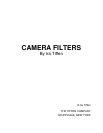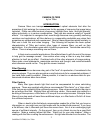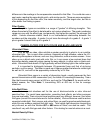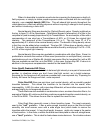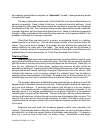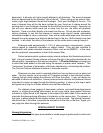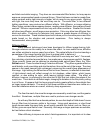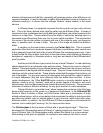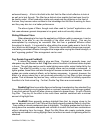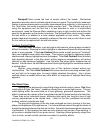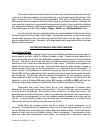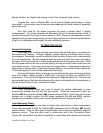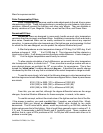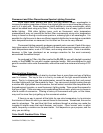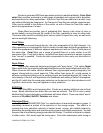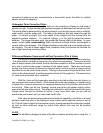
CAMERA FILTERS © Ira Tiffen
4
When it is desirable to maintain a particular lens opening for sharpness or depth-of-
field purposes, or simply to obtain proper exposure when confronted with too much light
intensity, use a neutral density (ND) filter. This will absorb light evenly throughout the
visible spectrum, effectively altering exposure without requiring a change in lens opening
and without introducing a color shift.
Neutral density filters are denoted by (Optical) Density value. Density is defined as
the log, to base 10, of the Opacitance. Opacitance (degree of absorption) of a filter is the
reciprocal of (and inversely proportional to) its Transmittance. As an example, a filter with a
compensation of one stop has a Transmittance of 50%, or 0.5 times the original light
intensity. The reciprocal of the Transmittance, 0.5, is 2. The log, base 10, of 2 is
approximately 0.3, which is the nominal density value. The benefit of using density values
is that they can be added when combined. Thus two ND .3 filters have a density value of
0.6. However, their combined transmittance would be found by multiplying 0.5 x 0.5 = 0.25,
or 25% of the original light intensity.
Neutral density filters are also available in combination with other filters. Since it is
preferable to minimize the number of filters used (see section on multiple filters), common
combinations such as a Wratten 85 (daylight conversion filter for tungsten film) with a ND
filter are available as one filter, as in the 85N6. In this case, the two stop ND .6 value is in
addition to the exposure compensation needed for the base 85 filter.
Color-Grad® Graduated ND Filters
Often it is necessary or desirable to balance light intensity in one part of a scene with
another, in situations where you don't have total light control, as in bright exteriors.
Exposing for the foreground will produce a washed-out, over-exposed sky. Exposing for
the sky will leave the foreground dark, under-exposed.
Color-Grad ND filters are part clear, part neutral density, with a smoothly graded
transition between. This allows the transition to be blended into the scene, often
imperceptibly. A ND .6-to-clear, with a two-stop differential, will most often compensate the
average bright sky-to-foreground situation.
These filters are also available in combination colors, as where the entire filter is, for
example a Wratten 85, while one half also combines a graded-transition neutral density, as
in the 85-to-85N6. This allows the one filter to replace the need for two.
Color-Grad filters generally come in three transition types. The most commonly
used is the "soft" gradation. It has a wide enough transition area on the filter to blend
smoothly into most scenes, even with a wide angle lens (which tends to narrow the
transition within the image). A long focal length, however, might only image in the center
of the transition. In this case, or where the blend must take place in a narrow, straight area,
use a "hard" gradation. This is ideal for featureless marine horizons. For situations where



